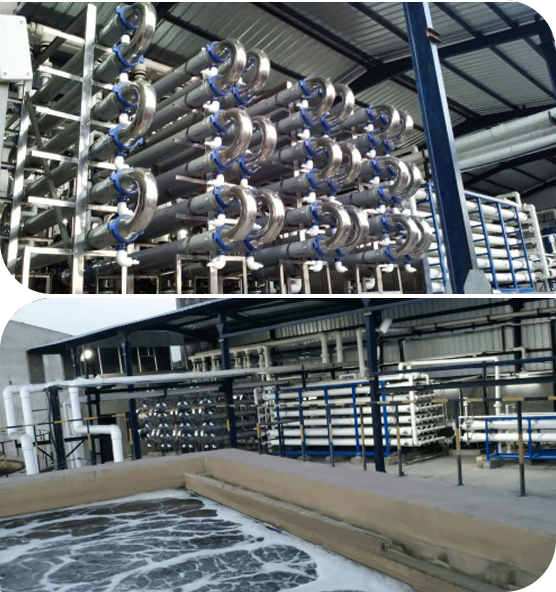
Waterman Engineers Australia is probably the main producers of Zero Liquid Discharge program. A ZLD program is often a cure course of action which happens to be used to eliminate many of the liquid squander from a method. The objective of ZLD h2o procedure is to lessen wastewater economically and make potable water that's fit for ordinary use. Zero discharge process is an advanced treatment system that comprises ultrafiltration, reverse osmosis, evaporation and fractional electro deionization. And we're a nicely-known supplier of ZLD systems.
In lots of Industries, including power, oil & gasoline, chemicals, mining and Some others, a large amount of wastewater is produced that has to be managed. Conventionally, this discharge of wastewater is completed via a plant outfall into a surface drinking water system like an evaporation pond, or in some instances deep perfectly injected. These methods produce several environmental problems by the public in many areas of the world, as water can be a scarce resource and its management needs to be monitored. These problems have resulted within the establishment of ZLD processes by quite a few industries to reduce their environmental footprint and enhance sustainability. And, Waterman Engineers Australia are greatest ZLD suppliers yow will discover for this system.
Qualities OF ZERO LIQUID DISCHARGE Program
The Homes of the Zero Liquid Discharge process will vary according to the distinct style and design and technological know-how used. Nevertheless, some typical Qualities of ZLD techniques contain:
H2o Conservation: Certainly one of the key aims of ZLD devices will be to conserve h2o by minimizing the discharge of liquid waste into your ecosystem.
Significant Drinking water Purity: ZLD techniques are made to produce superior-excellent drinking water that is free from impurities and contaminants, that makes them appropriate for use in many industrial procedures.
Versatility: ZLD devices are sometimes developed to support a broad choice of enter liquid streams, which makes them functional and ideal for use in various industries.
Innovative Wastewater Treatment: Zero liquid discharge devices use Superior wastewater procedure ways to take out impurities and contaminants with the effluent, generating superior-top quality h2o.
Squander Reduction: ZLD techniques enable decrease waste by reducing the amount of liquid squander that needs to be disposed of and by producing a concentrated, solid squander material that can be safely and securely disposed of.
Power Performance: ZLD devices is often Power-intensive due to substantial Electricity prerequisites of evaporation along with other wastewater treatment method processes. On the other hand, improvements in technological know-how are making Zero liquid discharge devices much more Electrical power-productive and price-helpful.
Waterman Engineers Australia manufactures Zero Liquid Discharge (ZLD) systems created to remove all liquid squander, aiming to create potable drinking water and decrease environmental influence. Their ZLD Zld System Manufacturer Zero Liquid Discharge System methods typically consist of ultrafiltration, reverse osmosis, evaporation, and fractional electro deionization. Important technologies used are Slipping Film Brine Concentrators, Compelled Circulation Crystallizer, and Some others, by using a two-stage process of pre-focus and evaporation/crystallization to recover and reuse h2o. These techniques are adaptable to various industries, emphasizing h2o conservation, large drinking water purity, squander reduction, and Strength effectiveness. Technological specs are varied and customizable, contemplating components like water source, movement level, and feed water top quality.
The necessity for Zero Liquid Discharge (ZLD) devices arises with the necessity to address environmental fears associated with water scarcity and pollution. In industries like electric power, oil & fuel, and mining, wide quantities of wastewater are produced. Historically, this wastewater is discharged into bodies of h2o, creating air pollution and depleting clear h2o resources. ZLD techniques intention to minimize these impacts by managing and recycling wastewater in the industrial method, therefore conserving drinking water, cutting down waste, and selling sustainability.
When thinking about the complex specifications of a Zero Liquid Discharge (ZLD) system, important areas to concentrate on contain the water source it will eventually deal with, the procedure's movement amount, the caliber of feed drinking water, the levels of remedy included, the Restoration rate of h2o, strategies for focus disposal, elements of design, operating conditions, and system automation and Command. These elements ensure the procedure's success, durability, and performance in treating and recycling industrial wastewater.
Zero Liquid Discharge (ZLD) crops present Positive aspects for example water conservation, squander reduction, and air pollution prevention, contributing to environmental sustainability. They are relevant in industries like energy technology, oil and gasoline, chemical substances, and mining, the place they help in managing industrial wastewater proficiently, cutting down the ecological footprint, and complying with stringent environmental polices. These units are essential in locations going through water scarcity and for industries aiming to boost their sustainability and operational efficiency.
FAQs for just a Zero Liquid Discharge (ZLD) method generally address its operational ideas, Expense-efficiency, maintenance demands, environmental impact, applicability across numerous industries, and regulatory compliance. These inquiries assistance consumers have an understanding of the system's Positive aspects, complex demands, and suitability for his or her particular wastewater management demands.
one. Zero Liquid Discharge (ZLD) is often a wastewater treatment procedure intended to do away with all liquid squander.
two. The procedure's factors are influenced by the specific industrial system, wastewater composition, and regulatory needs.
3. Effluent cure crops clear away pollutants from textile effluents to stop environmental contamination.
4. Positive aspects involve h2o conservation, pollution reduction, and regulatory compliance.
5. The goal is to attenuate environmental effects by recycling h2o and cutting down waste.
six-9. Effluent therapy plants are stages in wastewater remedy: Major (Actual physical separation), secondary (biological therapy), and tertiary (advanced treatment method).
10. Device operations consist of filtration, sedimentation, Organic treatment method, and disinfection.
11. Restricting parameters are components that have an affect on the therapy's performance, like pH and contaminant focus.
12. Structure issues contain movement level, effluent composition, and sought after good quality of treated drinking water.